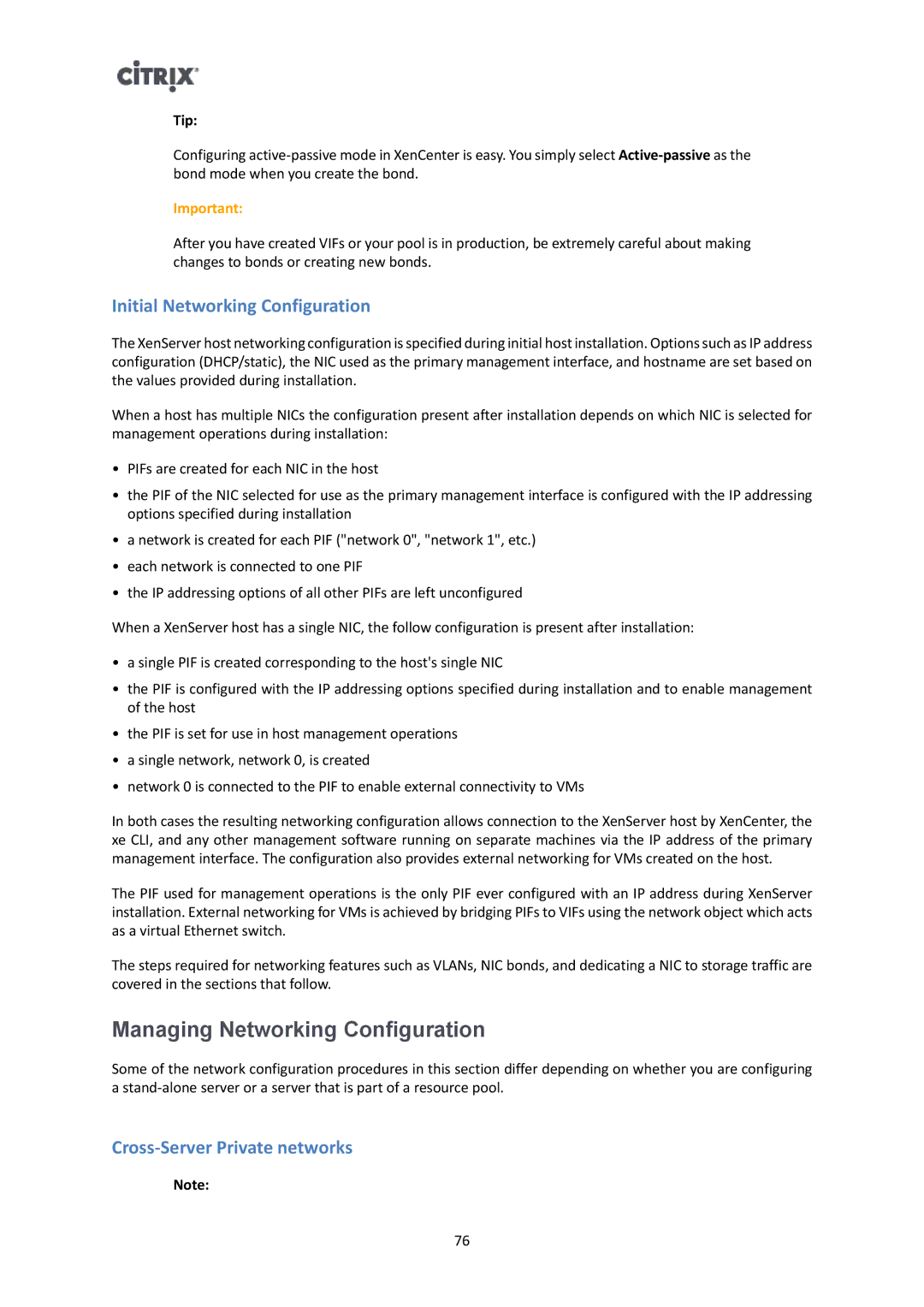Tip:
Configuring
Important:
After you have created VIFs or your pool is in production, be extremely careful about making changes to bonds or creating new bonds.
Initial Networking Configuration
The XenServer host networking configuration is specified during initial host installation. Options such as IP address configuration (DHCP/static), the NIC used as the primary management interface, and hostname are set based on the values provided during installation.
When a host has multiple NICs the configuration present after installation depends on which NIC is selected for management operations during installation:
•PIFs are created for each NIC in the host
•the PIF of the NIC selected for use as the primary management interface is configured with the IP addressing options specified during installation
•a network is created for each PIF ("network 0", "network 1", etc.)
•each network is connected to one PIF
•the IP addressing options of all other PIFs are left unconfigured
When a XenServer host has a single NIC, the follow configuration is present after installation:
•a single PIF is created corresponding to the host's single NIC
•the PIF is configured with the IP addressing options specified during installation and to enable management of the host
•the PIF is set for use in host management operations
•a single network, network 0, is created
•network 0 is connected to the PIF to enable external connectivity to VMs
In both cases the resulting networking configuration allows connection to the XenServer host by XenCenter, the xe CLI, and any other management software running on separate machines via the IP address of the primary management interface. The configuration also provides external networking for VMs created on the host.
The PIF used for management operations is the only PIF ever configured with an IP address during XenServer installation. External networking for VMs is achieved by bridging PIFs to VIFs using the network object which acts as a virtual Ethernet switch.
The steps required for networking features such as VLANs, NIC bonds, and dedicating a NIC to storage traffic are covered in the sections that follow.
Managing Networking Configuration
Some of the network configuration procedures in this section differ depending on whether you are configuring a
Cross-Server Private networks
Note:
76
